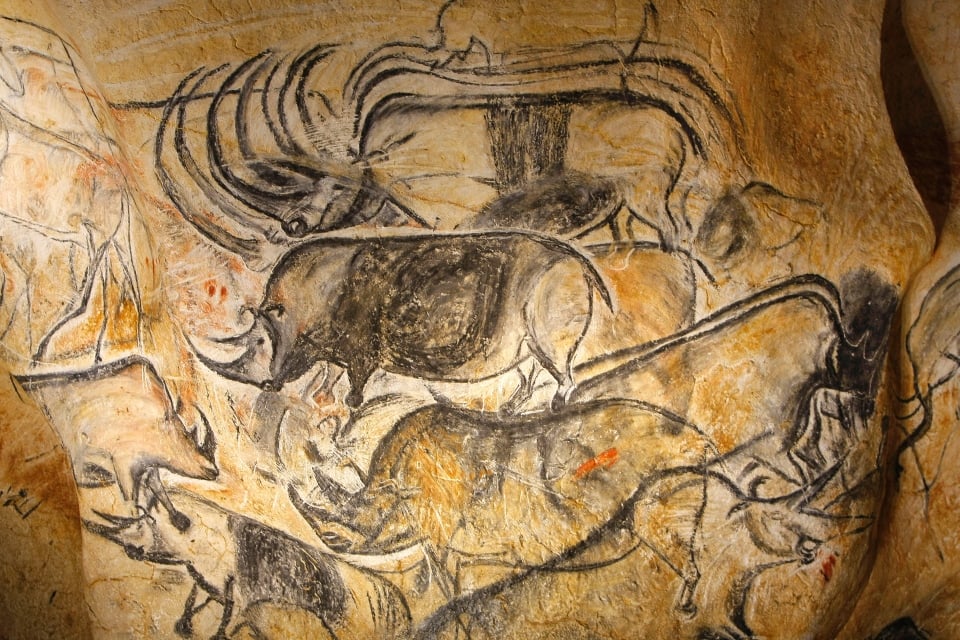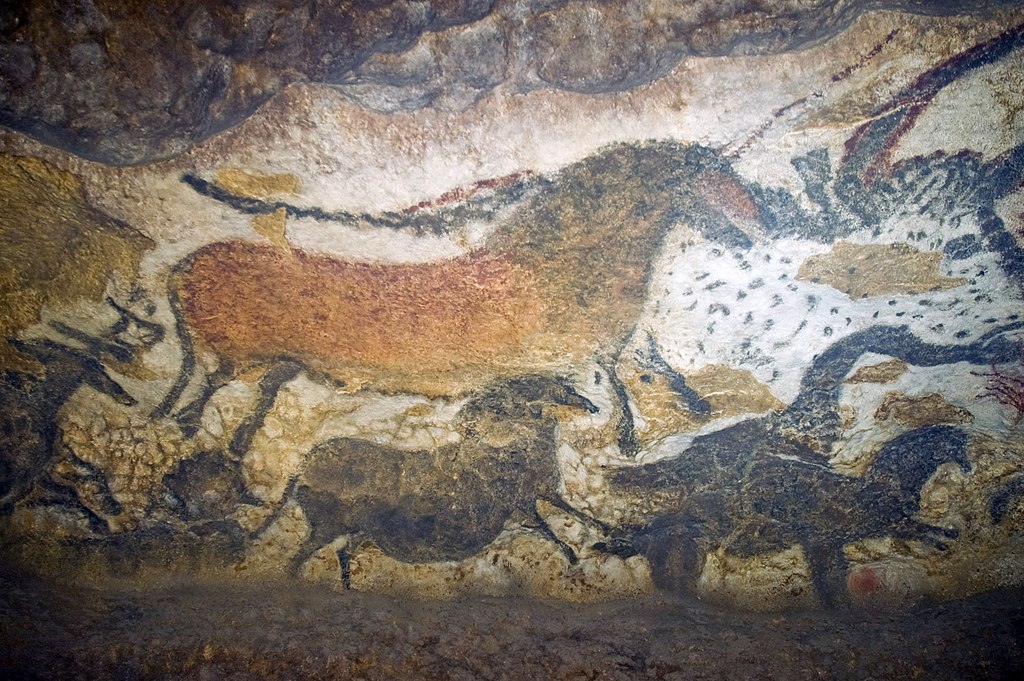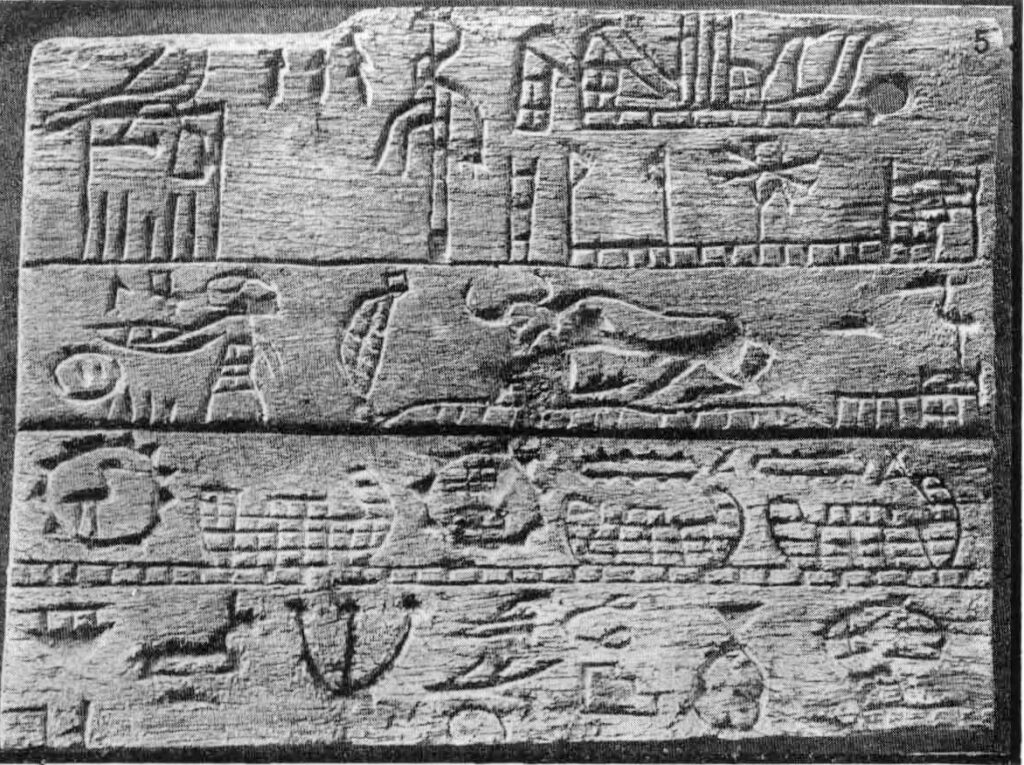Table of Contents
Picture this: you’re in a cave thousands of years ago, armed only with a simple tool and an urge to convey your thoughts. How would you do it?

Well, our ancestors had the ingenious idea to use pictographs—small drawings or symbols that represented objects or concepts. These early forms of visual communication allowed them to tell stories, share information, and express their ideas without uttering a single word.
Imagine living in ancient Egypt, where hieroglyphics adorned the walls of temples and tombs. These intricate symbols were more than just pretty pictures—they conveyed profound meanings.
Hieroglyphics served as a written language that combined pictographs and phonetics, allowing scribes to communicate complex ideas through a combination of visually striking images and phonetic sounds. Fast forward to the Middle Ages when European cultures developed their own unique systems of visual communication called heraldry.
Heraldic symbols consisted of shields adorned with various shapes, colors, and patterns that conveyed messages such as social status or family lineage. Knights would proudly display their coats of arms on banners or armor during battles as an emblematic representation of who they were.
Now let’s shift our focus to East Asia because no exploration of visual communication would be complete without mentioning the fascinating world of Chinese characters. The Chinese writing system is one of the oldest continuous traditions in the world, dating back over 4,000 years.
These intricate characters are formed by combining various strokes and radicals (basic components), resulting in an astonishingly rich vocabulary that captures both meaning and pronunciation. These early forms of visual communication laid the foundation for what would eventually become emojis as we know them today.
They demonstrated humanity’s innate desire to convey thoughts and emotions through images—a universal language that transcends words themselves. So take a moment to appreciate the ingenuity behind these ancient systems because without them, we might not have those beloved emojis that make our text messages and social media posts so expressive.
The Evolution of Emojis: How Symbols Transformed Digital Language
In the early days of digital communication, when text messages were limited to a mere 160 characters, expressing emotions through text was quite challenging. Words alone often failed to capture the subtle nuances of human expression.
It was in this context that emojis emerged as a revolutionary solution. Initially, emojis were simple and limited; only a handful of smileys and basic symbols were available.

However, as technology advanced and more people embraced digital communication, the world of emojis expanded exponentially. As smartphones became more prevalent in the late 2000s, emoji keyboards became standardized features on these devices.
This marked a turning point in the evolution of emojis. Suddenly, users had access to an array of colorful icons that allowed them to express emotions with greater depth and specificity.
The shift from simple smileys to detailed facial expressions paved the way for richer conversations beyond mere texts. The rise of social media platforms further propelled the transformation of emojis.
Platforms like Twitter and Facebook embraced emojis, integrating them seamlessly into their interfaces. Users could now not only use emojis in private conversations but also publicly express themselves through comments and posts using these vibrant symbols.
This shift transformed digital language by introducing a visual element that added layers of meaning to plain text-based communication. With time, emojis evolved beyond facial expressions and started incorporating objects, animals, food items, weather conditions — you name it!
The ever-expanding library of emojis enabled users to articulate their thoughts with precision while injecting personality into their messages. The introduction of skin tone modifiers further enhanced inclusivity by allowing individuals from diverse backgrounds to represent themselves with greater accuracy.
The evolution of emojis has revolutionized digital language by providing users with an arsenal of expressive symbols at their fingertips. With advancements in technology and widespread adoption on various platforms, it is safe to say that this transformative trend is here to stay.
Emojis have not only made our conversations more colorful but have also transcended linguistic barriers by offering universal visual cues. So, next time you send a text or post a comment, don’t forget to sprinkle it with a dash of emojis to add that extra touch of emotion and personality.
From Japan to Global Phenomenon: Unveiling the Cultural Journey of Emojis
Emojis, those delightful little symbols that have become an integral part of our digital communication, may seem like a recent invention. However, their cultural journey actually began in Japan in the late 1990s.
It all started with a simple idea: to create a set of expressive symbols that could enhance written communication and convey emotion in electronic messages. Shigetaka Kurita, a Japanese artist and designer working for NTT DoCoMo, was the mastermind behind this revolutionary concept.
Kurita’s inspiration for emojis stemmed from traditional Japanese pictographs called “kanji” and “kao-moji” (face characters). Pictographs have long been used in Japan as a way to represent words or ideas visually.
These ideograms often conveyed complex meanings through simple illustrations. Drawing on this cultural heritage, Kurita began designing the first set of emojis for NTT DoCoMo’s mobile platform.
Initially consisting of just 176 icons, these early emojis covered a wide range of emotions and activities, including smiley faces, weather conditions, food items, and even expressions related to technology. The simplicity and universality of these symbols quickly gained popularity among Japanese mobile phone users who found them incredibly useful for expressing themselves concisely while saving valuable screen space.
The global spread of emojis came about largely due to their inclusion in Apple’s iOS operating system in 2011. As iPhones became more popular around the world, so did the use of emojis.
Suddenly, people from different cultures were able to communicate using visual cues that transcended language barriers. This universal language was particularly appealing in an increasingly connected world where short text messages dominated communication channels.
Today, emojis have evolved far beyond their humble beginnings and have become an essential part of digital conversation worldwide. This cultural journey has also led to fascinating variations and adaptations across different regions and languages.
While some emojis maintain their original meanings, others have taken on new connotations based on cultural interpretations. For example, the “folded hands” emoji is universally recognized as a symbol of prayer or gratitude.
However, in some countries, it is also associated with greetings or even high-fives. Similarly, while the “eggplant” emoji is typically used innocently to depict the actual vegetable, it has acquired a risqué connotation in certain contexts.
Emojis have come a long way since their inception in Japan. What started as a modest collection of symbols has transformed into a global phenomenon that revolutionized how we communicate digitally.
By bridging language barriers and providing visual expression to our messages, emojis have allowed us to convey emotions and ideas more effectively than ever before. Their cultural journey has not only shaped our online conversations but also reflected our diverse interpretations and adaptations across cultures worldwide.
Emojis Through the Ages: A Historical Timeline of Iconic Symbols
In the vast landscape of emojis, one cannot help but wonder about their humble origins. To truly appreciate these little icons that have become an integral part of our digital conversations, we must take a journey back in time to explore the historical timeline of iconic symbols that paved the way for emojis as we know them today.
It all began with pictographs, which were simple drawings used by ancient civilizations to communicate ideas and stories. These early symbols, etched onto cave walls or carved into stone tablets, served as a primitive form of visual language.

From the earliest depictions of suns and animals to more complex hieroglyphics in ancient Egypt, humans have long sought ways to convey meaning through images. Fast forward to the 19th century when telegraph operators needed a way to efficiently communicate over long distances.
This gave birth to Morse code, a system where letters and numbers were represented by dots and dashes. Although not visual in nature like emojis, Morse code laid the groundwork for understanding how concise symbols could be used for communication.
The next major milestone came with the advent of emoticons in the late 20th century. These were combinations of characters on typewriter keyboards that formed facial expressions when viewed sideways.
For example, 🙂 symbolized a smiling face while 🙁 represented a frowning one. Emoticons added an emotional dimension to text-based conversations and laid the foundation for what was yet to come: emojis!
Emojis in the Digital Era: Exploring the Impact of Visual Expression on Communication
In today’s digital age, where communication primarily takes place through screens and keyboards, emojis have become a ubiquitous part of our daily conversations. These tiny icons, with their expressive faces and vivid colors, have revolutionized the way we express ourselves online.
They have transcended language barriers, adding layers of emotions and nuances to our written words. One of the most significant impacts of emojis lies in their ability to convey emotions and tone in text-based conversations.
In a world where sarcasm and humor can be easily misunderstood without vocal cues or facial expressions, emojis serve as visual indicators that help us communicate more effectively. A simple smiley face can instantly transform a potentially serious message into something light-hearted and friendly.
Similarly, a sad face or teardrop emoji can convey empathy and support in times when words alone fall short. Moreover, emojis have also democratized communication by making it more inclusive and accessible to people across various cultures and languages.
Unlike traditional written languages that require proficiency in grammar rules or vocabulary, emojis provide an intuitive way for individuals to express themselves without any linguistic barriers. Whether you’re communicating with someone on the other side of the world or trying to bridge a generational gap with your grandparent who isn’t tech-savvy, emojis offer a universal visual language that transcends age, culture, and language differences.
Furthermore, emojis have injected an element of creativity into our digital conversations. With thousands of different icons available at our fingertips, we are no longer limited to expressing ourselves solely through words.
Emojis allow us to add flair and personality to our messages while encouraging individuality in how we choose to represent ourselves online. From animated GIFs to personalized Bitmojis, these playful visual elements allow us to stand out amidst the sea of text-based messages.
Emojis have transformed digital communication by enhancing its effectiveness and inclusivity while encouraging individual expression. They have become a powerful tool to express emotions, reduce misunderstandings, and bridge cultural divides.
As we continue to embrace the digital world, emojis will undoubtedly remain an integral part of our daily conversations, evolving alongside the ever-changing landscape of communication technologies. So, the next time you’re texting a friend or posting on social media, let your words dance with emojis and unlock a world of visual expression at your fingertips.
FAQ: From Pictographs to Emojis: Tracing the Origins of Visual Communication
Q: What are pictographs, and how do they relate to emojis? A: Pictographs are ancient symbols used to represent objects, concepts, or ideas. Emojis, on the other hand, are modern digital icons that convey emotions, objects, or actions. While pictographs laid the foundation for visual communication, emojis evolved to become a more nuanced and expressive form of digital language.
Q: How have emojis transformed digital language? A: Emojis have revolutionized digital language by adding emotional context and enhancing communication in text-based conversations. They provide a visual representation of feelings, convey tone, and help clarify intentions, bridging the gap of non-verbal cues that are absent in online interactions.
Q: What cultural journey has led emojis from Japan to becoming a global phenomenon? A: Emojis originated in Japan and were initially popularized by Japanese mobile phone users. Over time, their universal appeal and ease of understanding transcended cultural boundaries, leading to their widespread adoption and integration into various digital platforms, making emojis a global phenomenon.
Q: Can you provide a historical timeline of iconic symbols that led to the development of emojis? A: The development of emojis can be traced back to the use of emoticons, which were combinations of punctuation marks and characters to express emotions. From there, the first graphical emoticons emerged, followed by the introduction of emojis in Japan in the late 1990s. Emojis gradually expanded their repertoire of symbols and gained global popularity with the advent of smartphones and their integration into Unicode standards.
Q: How do emojis impact communication in the digital era? A: Emojis play a significant role in digital communication by adding depth, emotion, and context to text-based conversations. They facilitate more effective and efficient communication, bridging language barriers, conveying sentiments, and fostering connection and understanding in an increasingly digital and globalized world.

2 thoughts on “From Pictographs to Emojis: Tracing the Origins of Visual Communication”